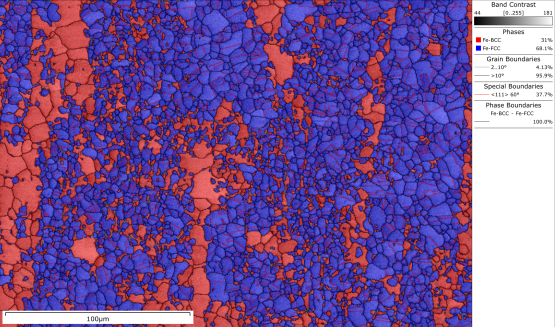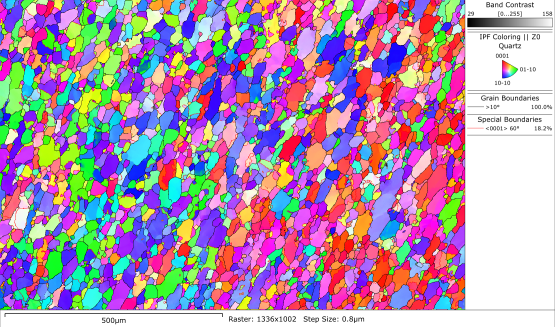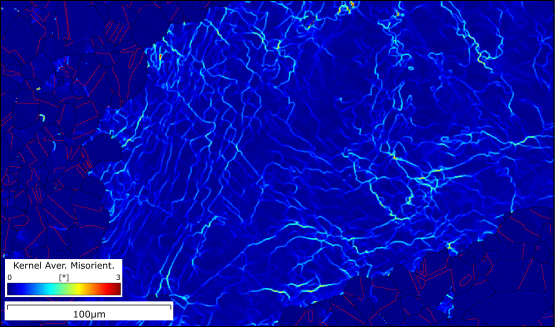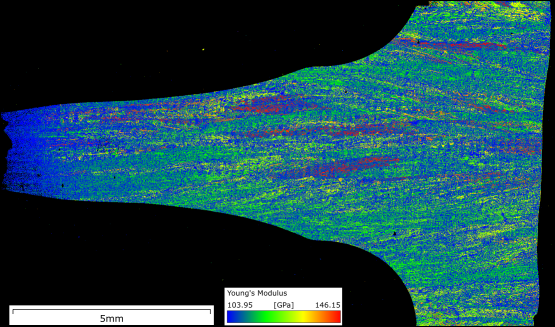Microstructure characterisation in metal powders by EBSD
We demonstrate how gas atomised copper powders can be effectively characterised using EBSD data collected with the latest high-speed Symmetry EBSD detector.
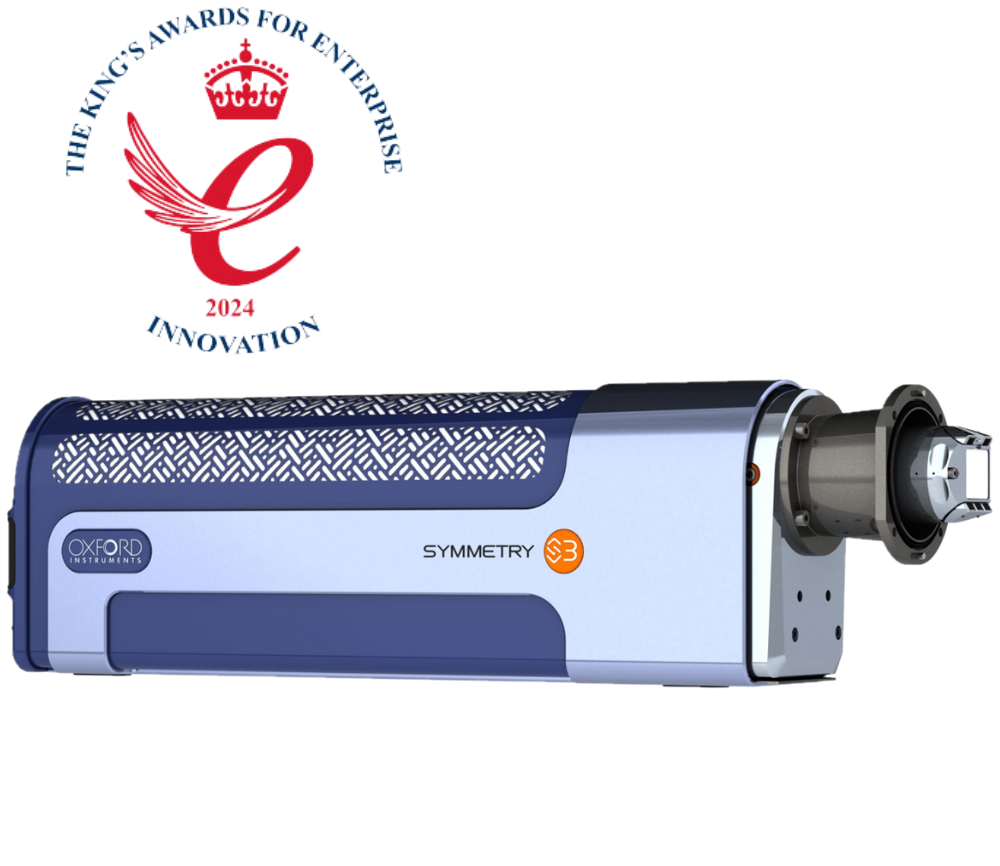
The Symmetry S3 is the only genuine all-in-one EBSD detector on the market, and is based on the revolutionary Symmetry detector, the world’s first EBSD detector to utilise advanced CMOS technology. Exceptional performance for all EBSD applications is combined with ease of use and a range of innovative design features. Highlights include:
Guaranteed indexing speeds in excess of 5700 pps at 156 x 128 pixel EBSD pattern resolution
1244 x 1024 pixel resolution – ideal for high angular resolution (HR) EBSD
Unique fibre-optic coupling with sub-pixel distortion
Extreme sensitivity, benefiting all types of analysis
Software controlled detector tilting
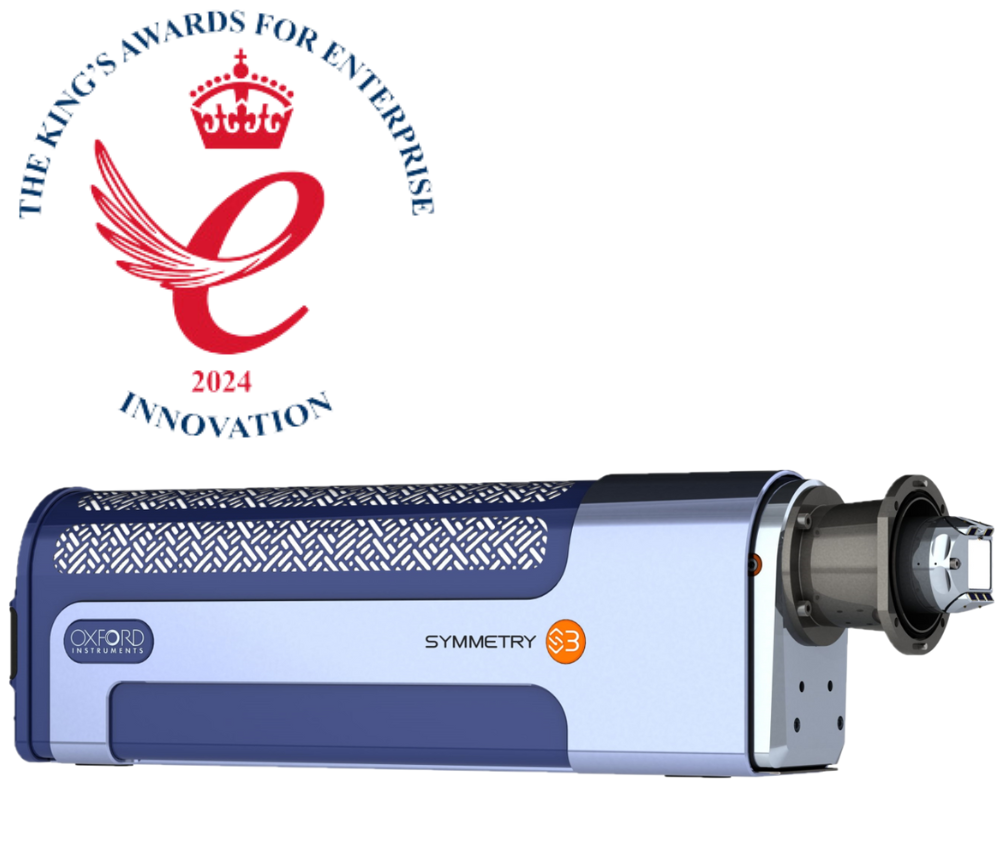
Symmetry S3 uses a customised CMOS sensor and fibre optics to unlock a unique and powerful combination of speed, sensitivity, and diffraction pattern detail. The S3, in combination with the AZtec software, delivers exceptional performance on all materials and for all measurements. The highest analysis speed of the Symmetry S3, in excess of 5700 pps, enables texture and grain size characterisation in a matter of seconds, yet this is achieved without requiring high beam currents or sacrificing pattern resolution. This means that these high speeds can be achieved even on challenging, real-world samples such as multiphase light metal alloys or deformed steels.
In addition, the Symmetry S3 can collect distortion-free, megapixel resolution EBSPs for detailed strain and phase analyses. This is a detector to suit all applications, enhanced by innovative features such as software controlled tilting (with dynamic calibration) and a unique proximity sensor.
When an EBSD detector has no compromise, no application is beyond your reach. This was recently recognised, as the Symmetry was awarded the King's Award for Enterprise in Innovation. Learn about the award here.
The Symmetry S3 detector has an outstanding performance coupled with ease of use, making it the ideal detector for all EBSD applications:
The performance of the Symmetry S3 detector is enabled by the powerful AZtecHKL acquisition platform, backed up by the fastest and most modern EBSD data processing software, AZtecCrystal. The comparison table below will help you to choose the best software package to deliver the flexibility and functionality that you require.
| Feature | Description | AZtecHKL | AZtecHKL | AZtecHKL |
| Standard | Advanced | Expert | ||
| AZtec EBSD Mapping | Point Analyses,LineScans and Maps | ✔ | ✔ | ✔ |
| ReAnalysis | Reprocess datasets with stored patterns | ✔ | ✔ | ✔ |
| AZtec Synergy | Fully integrates Oxford Instruments EDS & EBSD systems with simultaneous EDS and EBSD maps /linescans | ✔ | ✔ | ✔ |
| AZtec PhaseID | Combines EDS & EBSD data to identify unknown phases | ✔ | ✔ | ✔ |
| AZtec Image Registration | Register and use an image for specimen navigation | ✔ | ✔ | ✔ |
| TKD Navigator | Dedicated workflow for transmission Kikuchi diffraction (TKD) | ✔ | ✔ | ✔ |
| AZtec Data Analysis | Data Clean, Grain Detection & Size Analysis, Map Editor | ✔ | ✔ | ✔ |
| AZtecCrystalStandard | Modern, standalone EBSD data processing software incl. maps, pole/inverse pole figures, ODFs and grain analysis | ✔ | ✔ | ✔ |
| AZtec TruPhase | Real time differentiation of similar crystal structures using EDS | O | ✔ | ✔ |
| AZtec Autolock | Predictive and reactive specimen drift correction | O | ✔ | ✔ |
| Colour FSD | Colour visualisation of orientation images using forescatter detectors | O | ✔ | ✔ |
| PseudoSymmetry | Solves orientation measurements in materials where different orientations deliver similar EBSPs | O | ✔ | ✔ |
| AZtecHKL Steel | Reclassify phase tool for phase separation and dedicated steel phase database | O | ✔ | ✔ |
| AZtecCrystal Advanced | Comprehensive standalone data processing package, incl. materials properties, parent grain reconstruction and advanced dislocation analysis | O | ✔ | ✔ |
| AZtecCrystal MapSweeper | Dataset enhancement tools based on pattern simulation and pattern matching routines | O | O | ✔ |
| AZtec Large Area Mapping | Acquire and stitch multiple fields to characterise large sample areas | O | O | ✔ |
| AZtec MapQueue | Schedule acquisition of multiple experiments | O | O | ✔ |
| CIF Import | Import Crystal Information Files for phase definition | O | O | ✔ |
| Magnetic Field Correction | Correct EBSD pattern distortion from immersion lens fields | O | O | O |
| AZtec 3D | Automated acquisition of 3D datasets on compatible FIB-SEMs | ✘ | O | O |
O: Available as Option
We demonstrate how gas atomised copper powders can be effectively characterised using EBSD data collected with the latest high-speed Symmetry EBSD detector.
Discover how EBSD can be used to obtain grain size and texture information from NCM (nickel, cobalt, manganese) cathode material. By characterising and comparing samples of different cathode materials at different stages of the battery’s lifetime, it's possible to link the performance with the microstructure and improve understanding of how the materials can be optimised.
Reconstructing the metamorphic evolution of rocks often depends on the identification of key minerals that are only stable at specific temperatures and pressures. Combined EBSD and EDS analyses enable more rigorous phase identification than conventional techniques, with the added benefit of providing insights into a rock’s deformation and chemical history.
Learn about a new phosphor screen for the Oxford Instruments CMOS EBSD detector range that uses an optical interference filter to block out the infrared signal during high temperature EBSD experiments. This new technology enables faster and more sensitive analyses of microstructural changes measured in-situ at high temperatures.
Watch a demonstration of the previous generation, all-in-one EBSD detector Symmetry S3.
Recorded live from our Spotlight session, at the virtual meeting M&M 2020. In this session, expert Dr. Pat Trimby introduces the previous generation Symmetry S2 fibre-optically coupled EBSD detector.
Viewing time: 30 minutes
The Symmetry S3’s combination of extreme speed, sensitivity and versatility makes it the only EBSD detector that can cover all application areas. This includes:
